User blog: Bruce McPherson
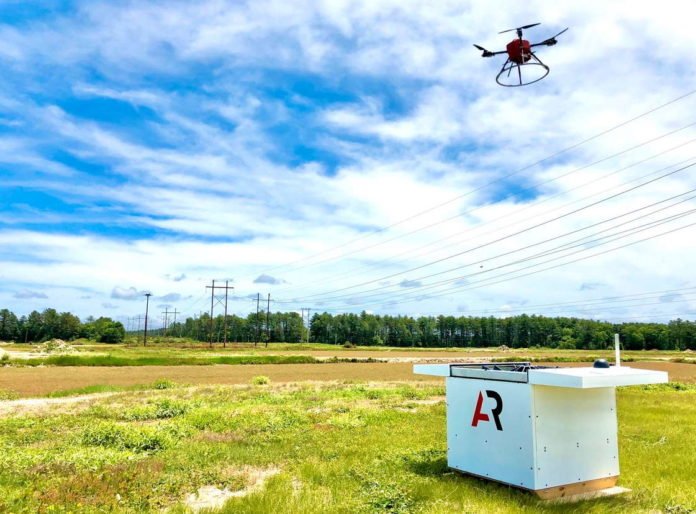
American Robotics, a leading commercial developer of fully automated drone systems, today announced that Stockpile Reports, a solutions provider for the bulk materials industry serving over 300 companies in 48 countries, selected American Robotics’ Scout System to build out its automated drone program. With American Robotics’ first-of-its-kind FAA approvals to operate without any humans on the ground, Stockpile Reports and its users are able to truly access the benefits of commercial drones and the full features of the Scout System. With more than 10,000 sand and gravel mines and more than 3,000 ready-mix and asphalt plants in the U.S. alone, Stockpile Reports will partner with American Robotics to deploy autonomous drone systems to address the market demand for this technology.
“The bulk materials industry suffers chronic financial write-offs due to a lack of accurate inventory data and Stockpile Reports helps customers solve problems with inventory using on-demand measurements from image processing. As experts in 3D reconstruction and digitization, we know what it means to dance on the edge of innovation,” said David Boardman, Founder and CEO of Stockpile Reports. “Autonomous drones will provide an opportunity to aggressively scale the real-time digitization of large industrial stockpiled materials. Our strategic customers will use autonomous drones to drive operational efficiency. We are excited to partner with American Robotics as the leader in this technology. The opportunity is limitless as we see the potential to deploy hundreds if not thousands of autonomous drones as we create inventory solutions for our customers across the bulk materials supply chain.”
Billions of dollars have been invested into improving America’s infrastructure – but too often that money is spent reactively to fix damages rather than proactively to ensure the upkeep and longevity of our roads, pipelines, electrical grids, and more. The Scout System is uniquely suited to provide a cost-effective solution to proactively monitoring and inspecting assets in the oil, gas and infrastructure sectors. Capable of running upwards of 20 autonomous flights per day, the Scout System automatically transmits valuable data for decision makers to review and act upon instantly.
“We are thrilled to be working with Stockpile Reports and enabling them to access the data and insights only possible through automated drones,” said Reese Mozer, CEO and co-founder of American Robotics. “At the end of the day, our industry’s product is data, not aircraft. With true automation comes the ability to collect a new category of data not previously possible, resulting in a new category of valuable analytics and insights.”
Stockpile Reports is one of many companies to take advantage of American Robotics’ unique FAA approvals and further develop their drone program. In the six months since receiving its FAA approvals, American Robotics has increased business development activity in key industrial sectors by 80 percent. Users within the oil, gas and infrastructure industries are seeing the benefits of unmanned drone flight and the valuable data it provides – leading to American Robotics rapid growth.
American Robotics rapid growth is being supported through the addition of new team members, such as Kevin Willis, who was recently appointed as Vice President of Sales. In just six months, American Robotics has increased full-time employees by 90 percent and the headcount is expected to grow at a similar rate throughout 2021 and 2022.
Also, American Robotics expects to enhance its growth opportunities as a result of its pending merger with Ondas Holdings Inc. (NASDAQ:ONDS), a developer of proprietary, software-based wireless broadband technology. Ondas and American Robotics offer complementary technology platforms to industrial markets and provide critical, next-generation data solutions to customers such as Stockpile Reports.
About American Robotics, Inc.
American Robotics (“AR”) is a privately-owned company focused on designing, developing, and marketing industrial drone solutions for rugged, real-world environments. AR’s Scout System™ is a fully automated, AI-powered drone system capable of continuous, unattended operation and is marketed as a “drone-in-a-box” turnkey data solution service under a Robot-as-a-Service (RAAS) business model. The Scout System™ is the first and only drone system approved by the FAA for automated operation beyond-visual-line-of-sight (BVLOS) with no humans on-site. AR was founded by leading roboticists from Carnegie Mellon and Stanford with a shared vision for bringing robotic technology out of the lab and into the real world to solve global challenges.
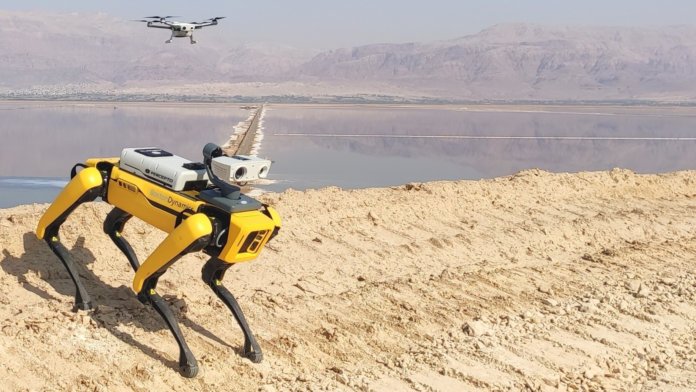
Percepto, pioneering autonomous inspection by industrial robotics today announced that it has been selected by the Federal Aviation Administration (FAA) to participate in the market-leading new BVLOS Aviation Rulemaking Committee (ARC) whose work will entail developing a regulatory path for standard drone operations Beyond Visual Line of Sight (BVLOS). Percepto has also been approved as an official partner of the upcoming FAA symposium.
“Percepto is deeply committed to gaining BVLOS and other regulatory approvals throughout the world to enable safe and scalable autonomous drone operations,” said Dor Abuhasira, CEO and Co-Founder of Percepto. “Seeking regulatory change for sUAS is vital for the industry to grow and for clients and their respective industries to utilize Percepto’s systems and sUAS flight benefits fully.”
The company is included among the first group of the ‘Gold standard’ FAA’s Type Certification (TC) process and is one of just six sUAS manufacturers selected to join the BVLOS ARC.
Percepto has an industry leading track record of regulatory firsts.
- In the US, during the wildfires of 2020, Percepto’s client, Verizon, was granted a first of its kind emergency waiver to fly the Percepto Sparrow drone and inspect critical communications infrastructure 24 hours a day with less than three miles of visibility, all from a remote location and no observer on site.
- In Australia, Percepto’s Sparrow now has an EVLOS waiver from CASA, allowing it to fly within 1500 meters (.93 miles) of multiple observers, and full BVLOS flight is expected in 2021.
- ICL Dead Sea was the first company in Israel to receive a BVLOS waiver, allowing them to monitor and secure their mining operations.
About Percepto
Percepto is at the forefront of redefining how industrial sites and critical infrastructure are holistically inspected and monitored, harnessing remote robotics to autonomously collect, aggregate and analyze visual data.
Leveraging its experience with Percepto Sparrow, the most deployed drone-in-a-box solution on the market, the company introduced Percepto AIM (Autonomous Inspection and Monitoring), the first end-to-end autonomous inspection and monitoring platform. Percepto AIM empowers the remote operation center of the future to assess risk, minimize downtime, drive efficiency, increase safety and reduce operational costs.
Founded in 2014, Percepto’s solutions are trusted by Fortune 500 customers in more than 10 countries including ENEL, Florida Power and Light and Verizon. The company is the recipient of the Frost & Sullivan Global Enabling Technology Leadership Award. For more information, visit www.percepto.co.
By PRESS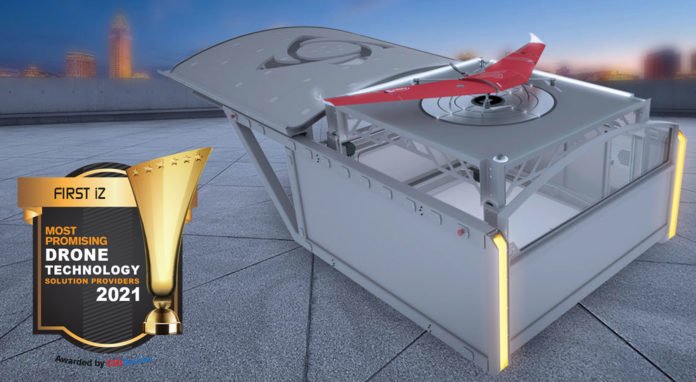
A panel comprised of CEOs, CIOs, VCs, Analysts, and the CIO Review editorial board has selected FIRST iZ as one of ten Top Promising Drone Technology Solution Providers for 2021 in the magazine’s third annual Drone Tech edition. The selection process covered the companies’ offerings, core competency, news/press releases, client testimonials, milestones, and other recognition.
According to CIO Review, “Unmanned Aerial Vehicles (UAVs), Miniature Pilotless Aircraft, or Flying Mini Robots – drones are today rapidly gaining traction as a revolutionary technology in commercial as well as non-profit sectors. The use of drones has significantly changed by leaps and bounds over the years, and the future opportunities of this technology are limitless. Although still in its infancy, drone technology is breaking through rigid traditional barriers across industry verticals.”
FIRST iZ®, founded by CEO Phil Burks, leverages drone technology to enhance emergency response teams’ abilities to de-escalate and handle problems safely and efficiently. The UAV is programmed to fly autonomously to the incident location, provide live videos while in transit, sniff for hazardous gases, hover while still delivering live video and provide first responders the information they need, often even before personnel arrive on scene. With just the click of a button by a dispatcher, the drone can be automatically dispatched to the site of the desired location.
Burks noted, “Our first responders put their lives on the line every day. Our mission is to help give them the situational awareness they need to save lives, while preserving their own as well. I truly believe that the more FIRST iZ systems we can get out there, the more folks get to go home to their families.”
Aside from two UAV options including a quadcopter and hybrid VTOL (vertical take-off and landing) and operating software, the solution features FIRST PortTM, a rugged, weather-protected, remotely operated “smart” enclosure, which offers the ability to provide autonomous deployment, data gathering, and secure storage of a small unmanned aerial vehicle (sUAV), or drone. The port employs sensors which can assess the health and welfare of its airframe, coordinates precise launch and landing, and offers a patent-pending contact charging solution between missions.
CIOReview is a leading enterprise technology magazine that reaches out to over 173k qualified print and digital subscribers across the U.S. It is a go-to resource for senior-level industry experts, technology acquirers, buyers, and decision-makers to share their insights following a unique learn by peers approach. To read the article featuring FIRST iZ, visit: https://magazine.cioreview.com/magazines/June2021/Drone_Tech/?digitalmagazine#page=12
About FIRST iZ
FIRST iZ is a Phirst Technologies, LLC company. FIRST iZ and its manufacturing partners are proudly based in the United States of America. For more information, visit firstiz.com or to learn more about FIRST Port, visit yourfirstport.com.
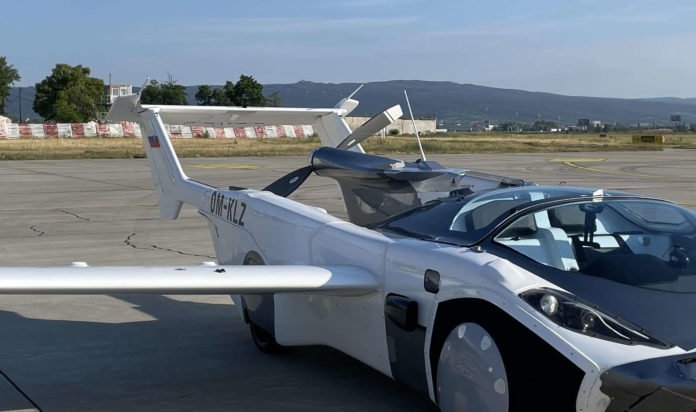
Science fiction is now a reality
AirCar, a dual-mode car-aircraft vehicle moved closer to production this week, fulfilling a key development milestone in a 35-minute flight from the international airport in Nitra to the international airport in Bratislava on June 28th, 2021.
Klein Vision’s patent-protected AirCar completed its 142nd successful landing in Bratislava at 6:05 AM. After landing, at a click of a button the aircraft transformed into a sports car in under three minutes and was driven by its inventor, Professor Stefan Klein and co-founder, Anton Zajac to downtown Bratislava, cutting the typical travel time by a factor of two.
“Professor Stefan Klein is the world leader in the development of user-friendly Flying Cars.” said Dr. Branko Sarh, Boeing Co. Senior Technical Fellow. “The automated transition from road vehicle into an air vehicle and vice versa, deploying/retracting wings and tail is not only the result of pioneering enthusiasm, innovative spirit and courage; it is an outcome of excellent engineering and professional knowledge,” he added.
The AirCar Prototype 1 is equipped with a 160HP fixed-propeller engine and a ballistic parachute. Under the supervision of the Civil Aviation Authority, the AirCar has completed over 40 hours of test flights, including steep 35 degree turns and stability and maneuverability testing. AirCar Prototype 1 has flown at 8200 ft and at 45% engine power it reached a speed of 170km/h.
AirCar Prototype 2, the pre-production model, will be equipped with a 300HP engine and receive the EASA CS-23 aircraft certification with an M1 road permit. With its variable pitch propeller, the Prototype 2 is expected to have a cruise speed of 300km/h (162kt) and range of 1000km (621M).
“This flight starts a new era of dual transportation vehicles. It opens a new category of transportation and returns the freedom originally attributed to cars back to the individual.” said Professor Klein after exiting the AirCar cockpit in Bratislava. “AirCar is no longer just a proof of concept; flying at 8,200ft at a speed of 92kt, it has turned science fiction into a reality.” Added Anton Zajac, the co-founder of Klein Vision.
By PRESS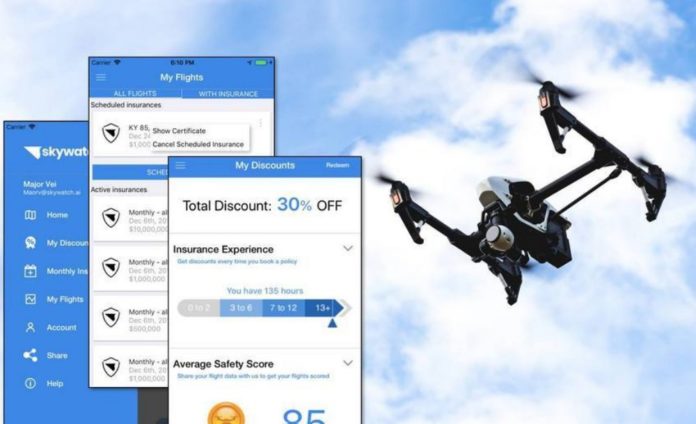
Ilan YusimHead of Marketing|SkyWatch.AI
Commercial drone usage has expanded exponentially ever since the FAA issued its first drone commercial permit in 2006. 15 years later, drone manufacturing shows no sign of slowing down. So what’s new in the commercial drone industry? At SkyWatch, we conducted research using data spanning dozens of drone companies and thousands of individual units from our policies across the United States between 2018 and 2021. Here’s what we found.
DJI IS LOSING ITS TOTAL MARKET SHARE ACROSS COMMERCIALLY INSURED DRONES
The drone manufacturing industry shows early signs of maturity as new players take larger slices of the cake. It’s no surprise that DJI is still the leading drone manufacturer, but since 2018, it has lost a full 7% of its total market share. New companies like Autel and Skydio are challenging DJI in providing businesses with new product offerings. Autel, which released the acclaimed EVO 1 in 2018, and newer versions such as EVO 2 with 8K capabilities, have risen its market share by 4.4%. Skydio, which builds tech-savvy products such as the Skydio 2 with autonomous flight, has risen 1.5% in the same period. Dozens of other companies with unique products and capabilities have boosted their share of the market as well.
 DJI lost 7% of market share in 3+ years
DJI lost 7% of market share in 3+ yearsTHE AVERAGE PRICE OF AN INSURED DRONE IS INCREASING
Another sign of industry maturation is that the average prices of commercially insured drones and equipment are rising. Our analysis demonstrates a current average price of $2,903.76 for a consumer drone, up 22% since 2018.
 The average price of drones increased 22% in 3+ years
The average price of drones increased 22% in 3+ yearsWith market share becoming diversified, more companies fight for their spot with newer and feature-packed drones year over year. With newer drones, businesses are willing to spend more on their drones for more advanced features and technology, hence the rising prices. We look forward to seeing what trends take shape next.
By PRESS
Drone mounted water sampling and sensor system increases sampling rates by 75% while reducing cost by 90%
New York – June, 2021 – Reign Maker, a drone and data services innovation company, today announced the launch of Nixie, the world’s first drone-enabled water sampling and data collection system, designed to drastically increase sampling rates and accuracy while reducing the number of required field personnel and eliminating the dependence on marine vessels.
To ensure our water supplies remain clean and safe, drinking water utilities, water resource management agencies, and environmental regulators worldwide routinely test water quality through government-mandated sampling and analysis. However, traditional water sampling and analysis methods are logistically complex, labor-intensive, time-consuming and costly. Furthermore, there are no centralized repositories for water sampling data. With Nixie, Reign Maker aims to reduce the costs and complexity of water sampling and analysis worldwide.
Nixie automates water management across the global, commercial, industrial, and agricultural supply chain by using drones, water sensors, software, connectivity, and the Cloud to provide real-time actionable data stored in a central location. The system is designed to be intuitive and straightforward to operate in the field and conforms with the United States Environmental Protection Agency standards for water sampling.
“With Nixie, we are committed to changing how water is analyzed worldwide, one sample at a time,” said Jessica Chosid, Founder and CEO of Reign Maker. “Our mission is to remotely collect, digitize, and transform commercial, industrial, and agricultural water management across the supply chain.”
Nixie Base consists of a patented drone-mounted water sampling attachment and lockable bottle cradle that easily and securely attaches to a drone while hovering. The drone then flies to the sample collection location and submerges the sample bottle 2 feet below the surface in currents up to 5 knots. As a result, it will not stir up sediment in shallow water, thus eliminating the risk of contamination. A technician then removes and replaces EPA-approved sample bottles from the cradle. Each operation can be completed in less than three minutes.
The system currently supports DJI M600 and M300 RTK commercial platforms. It utilizes their GPS systems to log telemetry data, including time and location coordinates, to improve each sample’s chain of custody and to create historic GPS logs so Nixie can repeatedly dip into the same location to record water quality changes over time accurately.
Nixie chose the M600 and M300 RTK enterprise drone platforms from DJI for their proven safety, reliability, versatility, and ease of use. DJI, the world’s largest civilian drone manufacturer, leads the industry in developing drones for critical tasks in public safety, infrastructure, construction, energy and similar industries with high expectations and no tolerance for error.
“Nixie is a revolutionary system to accomplish a critical task better, easier, faster, more safely and more efficiently with drone technology, and DJI is proud that Reign Maker has developed it specifically for use with our premier drone platforms,” said James Thomas, Digital Lead, B2B, at DJI Enterprise. “We’re excited to see how our drone technology can help Nixie improve the safety and quality of drinking water sampling around the world.”
Nixie Advanced is an integrated hardware, sensor, software, data analysis, and cloud-based management solution designed to efficiently enable water quality monitoring in-situ, anywhere in the world, across the supply chain, even in the most inaccessible environments. Nixie is also developing the world’s first water database to be updated in real-time for better global monitoring, management, and water resource protection by tracking naturally occurring events and artificial threats.
“The New York City Department of Environmental Protection alone collects 14,000 water quality samples a year, collecting 30 samples a day using boats, captains, and a crew of three at an average cost of $100 per sample,” added Chosid. “With Nixie, a crew of two can collect 120 samples in the same seven-hour shift, at a cost as low as $10 per dip.”
Nixie advanced is currently under development, and Nixie Base is available for pre-order today. For more information, visit www.nixiedip.com.
About Reign Maker
Reign Maker is a New York City-based drone and data services innovation company. It operates and builds custom UAS (drones) and other robotic systems for the civil engineering, telecom, and utility sectors. Reign Maker is the developer of Nixie, the world’s first drone-based water sampling and analysis platform. Reign Maker services include critical infrastructure inspection, monitoring, and data collection. Projects include bridges, highways, cell towers, building facades, waterways and wastewater facilities. Reign Maker is a Woman-Business Enterprise (WBE), certified by the State and City of New York. For more information, visit: www.goreignmaker.com
By PRESS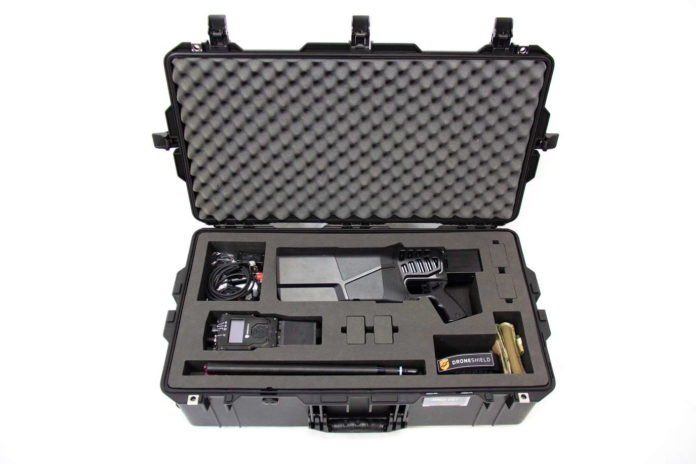
DroneShield Ltd (ASX:DRO) is pleased to announce the release of Immediate Response Kit (IRK), a rapidly deployable C-UAS detection and defeat kit.
IRK consists of an RfPatrol portable (1.2kg/2.6lbs incl battery) detection device and a DroneGun MKIII (2.1kg/4.7lbs incl. battery) defeat device, in a single rugged carry case.
The kit is available now to approved purchasers. Both RfPatrol and DroneGun MKIII are mature products, currently fielded by a number of military and Government agency customers globally.
Oleg Vornik, DroneShield CEO, commented “IRK was released in response to multiple customer requests for a single portable response kit, incorporating two of our market leading products in their segments, RfPatrol and DroneGun MKIII.“
Additional information about the Immediate Response Kit (IRK) can be found here:
www.droneshield.com/irk
By PRESS
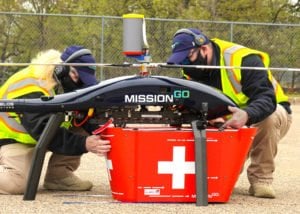
Game changing technology for a critical mission in healthcare: drones for organ transplants are proving their worth. “MissionGO, a leader in unmanned aircraft solutions that is transforming logistics; LifeSource, the organ procurement organization (OPO) serving the upper Midwest; and Mercy Hospital, part of the Allina Health system, today announced the first-ever test flight carrying a human pancreas via an Unmanned Aircraft System (UAS) conducted on May 5,” says a press release.
Following a moment of silence led by Lead Pilot Ryan Henderson to honor the donor hero, this historic flight transported a research pancreas from Mercy Hospital in Coon Rapids, flew a 10-mile circuit over the Mississippi River, then returned to Mercy Hospital. This flight successfully demonstrated the viability, value, efficiency gains and delivery speed of lifesaving organs via UAS within the Twin Cities metro area.
Organ transportation is both critical and complex, requiring multiple partners to cover all aspects of the mission. For this operation, the pancreas was monitored for the duration of the flight “using MediGO’s hardware and software platform to provide the real-time location status of the organ to all critical stakeholders,” says the press release. In addition, LifeSource performed a biopsy on the pancreas before and after the flight “to study the impact of UAS transportation on a human organ, revealing no changes in pre and post flight biopsies.” Beyond the complexities involved in transporting organs, operators require flight telemetry: “MissionGO’s aircraft was monitored with AlarisPro’s new flight data recorder known as the AlarisAIR (Automated Independent Recorder) which provides flight telemetry data through both cellular and Bluetooth networks.”
“LifeSource has set an audacious goal of transplanting 1,000 organs in one year by 2027; last year, we facilitated 603 transplants,” said Susan Gunderson, LifeSource Founder & CEO. “Organ transplant is a race against time; this is one of many transformative solutions to help us save more lives.”
MissionGO tested drones for organ transplants in 2019 and 2020, transporting a research corneas and a research kidney. MissionGO has also made progress in certifying their MG Velos 100 UAS: and they hope to integrate drones into the LifeSource and Allina Health programs.
“The future is here – there’s a demand in the market for innovative and sustainable solutions in the commercial and medical industry. MissionGO is here to prove that unmanned aircraft are a reliable mode of transportation for precious cargo,” said Frank Paskiewicz, MissionGO Executive Vice President for UAS Cargo Operations. “LifeSource and Allina Health have been incredible partners that are pioneering new solutions for the organ transplant industry.”
“Organ transport by an unmanned aircraft is an incredible innovation for health care,” said Robert Quickel, MD, vice president clinical service line, surgical procedural administration for Allina Health. “These test flights are an inspiring step in overcoming obstacles and increasing the number of viable, life-saving organs that our transplant patients so desperately need.”
Scott Plank, CEO and Co-Founder of MissionGO and MediGO explains, “MissionGO is focused on unmanned aircraft operations, while MediGO is dedicated to improving organ transplant and hospital logistics through just-in-time delivery. MediGO is an important part of MissionGO’s medical cargo operations and is the only company monitoring all modes of transportation for medical deliveries. Together, MissionGO and MediGO are taking organ logistics innovation into the future.By Miriam McNabb
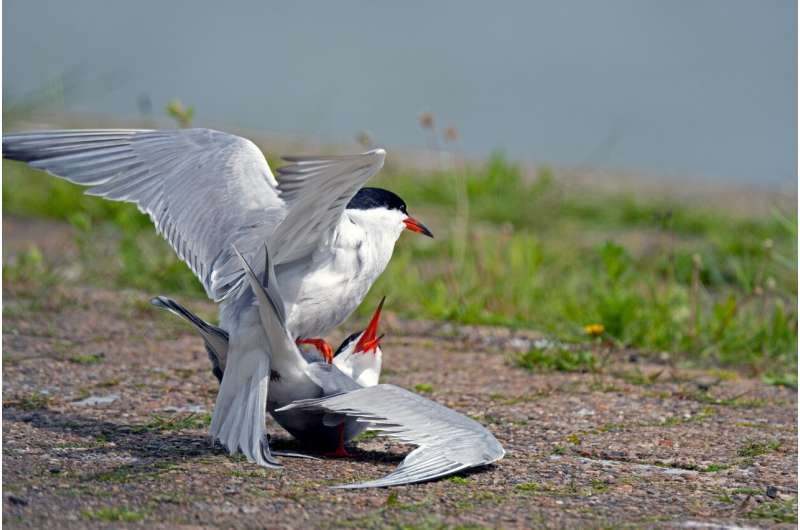
Eggs littered the sand, but there was no sign of life around or in them.
The seabirds that should have been keeping watch had taken off, terrified by a drone that crash-landed into their nesting grounds on an island at the Bolsa Chica Ecological Reserve.
"We've never seen such devastation here," said Melissa Loebl, an environmental scientist who manages the Huntington Beach, California, reserve. "This has been really hard for me as a manager."
Some 3,000 elegant terns fled the reserve after the drone crashed May 12, leaving behind 1,500 to 2,000 eggs, none of them viable. It was the largest egg abandonment that scientists who work there can recall.
As for the birds, which are highly sensitive to perceived threats—nobody is sure what happened to them.
"We actually still don't know where they are," Loebl said.
The mass abandonment was the culmination of a year of issues caused by increased traffic to the reserve, which has seen the number of visitors double as the COVID-19 pandemic sent droves of people outdoors. There has been an uptick in bicyclists, who sometimes carve trails off established paths and disturb sensitive areas, and more people have been bringing dogs, which can scare wildlife and leave behind waste. Both are prohibited in the reserve, as they threaten to flush birds off their nests.
"They're seen as predators," Loebl said. "Think of a bird. When I migrate 100 miles, I want a safe place to nest, forage and breed, and they come here to do just that."
But nothing has been as catastrophic as drones, which are being flown over the reserve with increasing frequency.
Drones are not permitted to fly over state wildlife reserves, precisely because they run the risk of disturbing habitats, said Officer Nick Molsberry of the California Department of Fish and Wildlife. If that happens, the operator can face additional charges for nest destruction and harassment of wildlife, he said.
The Bolsa Chica Ecological Reserve is one of the last remaining and largest coastal wetlands in Southern California, where 95% of the habitat has been destroyed, Loebl said. More than 800 species rely on the 1,000-plus-acre area for critical habitat. Of those species, 23 have special status, including the California least tern and Ridgway's rail, which are endangered, and the Western snowy plover, which is classified as threatened.
"These are all birds we put a lot of time and energy into managing their habitat so they can have a successful year breeding," Loebl said.
Volunteers spend the fall preparing two manmade islands—North Tern Island and South Tern Island—taking on vegetation management projects so the birds can nest, Loebl said.
In April, thousands of terns arrive for the breeding season, including elegant terns that migrate from Central and South America. They stay until August, when they fly away with their chicks.
Although elegant terns are not considered threatened or endangered, Bolsa Chica is one of just four known nesting sites, said Michael H. Horn, professor emeritus of biology at Cal State Fullerton. The others are at the Los Angeles Harbor, in San Diego and in Mexico's Gulf of California.
"We worry about them because there's so few nesting sites, not so much because of their numbers," he said. "So that's a reason why if a nest site doesn't produce or fails, that's concerning."
Horn is waiting to hear whether the birds have established themselves in Mexico, which is usually the largest colony. There are now several thousand in San Diego. But they chose not to nest this year at the Los Angeles Harbor, making the abandonment at Bolsa Chica even more of a loss.
"We have a person who monitors them and other seabirds at the port, and he said the birds have flown by, maybe stayed a little while, a few hours or overnight, and then they've left," Horn said, noting that they may decide not to populate a site because of predators, disruptions to the food supply or other disturbances.
The elegant terns, together with some 300 other avian species that frequent the reserve, draw birders and photographers from across the region and farther.
In the case of the crashed drone, given the scope of the devastation, officials are seeking to aggressively enforce the law. Molsberry is working with the Orange County district attorney's office to figure out how to get a warrant and lawfully retrieve video footage and location history from the drone.
"We will hopefully have some great footage of the user and what the drone did, its flight path, and be able to articulate all the elements we need to fulfill the violation for this person," he said.
Molsberry, who has been with the department eight years, said he'd never seen a drone crash-land in a reserve before this spring. But the May 12 crash was actually the second in a 24-hour stretch. The day before, a drone went down in Bolsa Chica near nesting sites of the California least tern and the snowy plover. The birds fled but eventually returned, "which was great," Loebl said. "Still sad, but great."
That drone operator came forward to claim the device and received a citation.
On Thursday, while KABC-TV Channel 7 was interviewing Loebl and Molsberry for a segment about the drone problem, a man pulled into the parking lot and started to fly a drone right above them, sending it directly toward another tern colony, Molsberry said.
"I actually ended the interview, contacted the individual, identified myself and issued that person a citation right there on the spot," he said. Television cameras captured yet another drone flying over the reserve whose operator couldn't be located.
The man Molsberry cited claimed he didn't realize it was illegal to fly drones there because a Federal Aviation Administration app showed the airspace as a so-called "green zone," Loebl said.
"When it comes to the flying of drones in the airspace, the airspace does not belong to us," Molsberry conceded, adding that the FAA might not list the reserve as a no-fly area, but there are signs all around Bolsa Chica stating that drones can't be flown there, as he pointed out to the man who was cited.
The reserve's management is working with the volunteer groups Bolsa Chica Conservancy, Bolsa Chica Land Trust and Amigos de Bolsa Chica to develop a program that will have trained docents walk the property and educate the public about the rules. Loebl said the state is also hoping to work with federal authorities to ensure that airspace over the reserve and other sensitive areas is listed as restricted.
In the meantime, the long-term effects of the nest abandonment remain unclear. Horn noted that there will be some 4,500 fewer birds feeding on anchovies and sardines in the waters near Bolsa Chica this summer. That could conceivably draw more predators that also like to feed on the fish, such as seals, sea lions and other seabirds.
"The removal of one species might affect another species," Loebl said. "We have such rich biodiversity here."
Horn said it's possible the elegant terns fled to other nesting sites, and they could even nest again and produce more eggs before the summer ends.
But there will be no elegant tern chicks at Bolsa Chica this year.
"That's a full generation of birds not established," Molsberry said. "It's just so abnormal not to see them there right now."
by Alex Wigglesworth, Los Angeles Times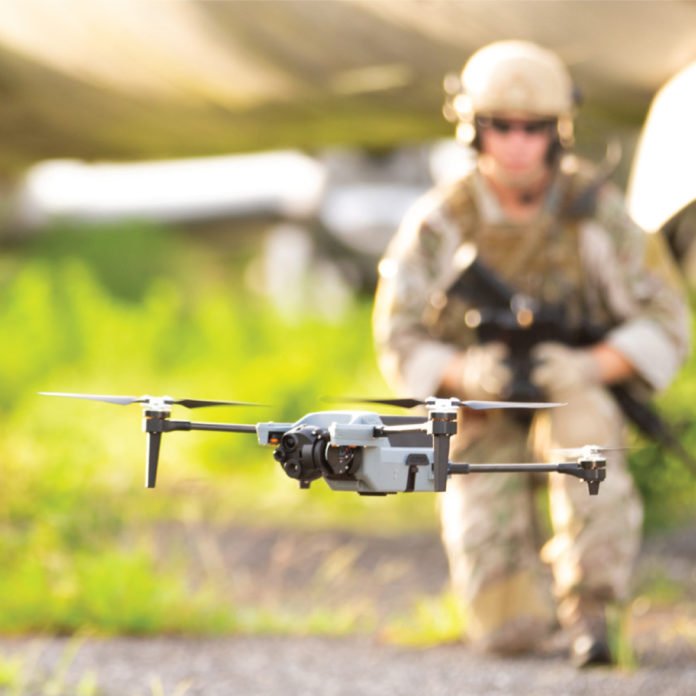
Teledyne FLIR’s primary UAS focus is on the development and sale of unmanned aerial systems (UAS) for military, government, and public safety end-users, under the company’s Unmanned and Integrated Solutions business segment.
We’re excited about the ION M440 and its ability to provide elevated situational awareness to multiple customer markets globally.
There has been no change to the ION M440 product offering, and ION M440 remains part of the Blue sUAS program. We also have been evaluating opportunities in the commercial market through our Components business segment.
The email referenced was inaccurate and inadvertently sent to a small group of commercial distributors.
It in no way reflects or alters Teledyne FLIR’s commitment to providing the most advanced, rugged, and multi-mission drones for our military, government, industrial, and first-responder customers worldwide.
By PRESS